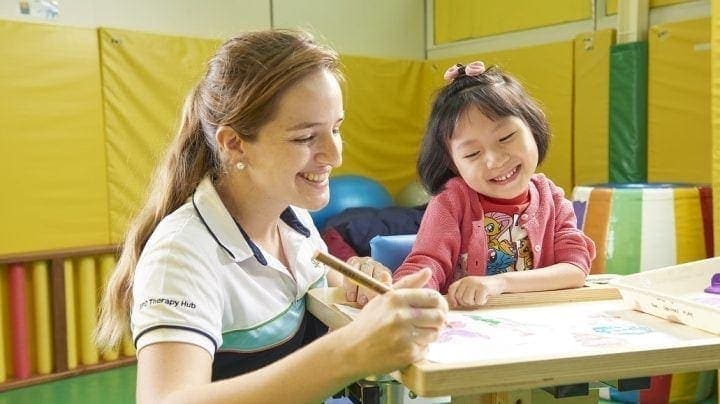Caregivers’ involvement is important in extending learning opportunities to children with developmental needs at home. As quality intervention most often takes place in the child’s natural environment, caregivers can play the role of the teacher at home. SPD’s early intervention teacher, Gerry Da, explains how.
What is Structured Teaching?
Structured Teaching, also known as “Gradual Release of Responsibility (GRR)”, is a model of instruction that gradually shifts the responsibility in the learning process from the teachers/caregivers to the child to enable the child to become a more independent learner. The model aims to promote the child’s independence and mastery of targeted skills through three stages of structured teaching involving demonstration, prompting and practice.
Three Stages of Structured Teaching
| Stage 1 |
Caregiver |
Child |
| I Do Stage
Direct Instruction (caregiver) |
|
|
Demonstrations should be incorporated into the instructions to help the child understand an action better. Caregivers should also explain to the child the purposes of the activities and the expected learning outcomes. To make the demonstrations successful, caregivers should provide examples and explanations.
Example:
Caregiver: “Today, we are doing colouring (make the presentation interesting for the child). Mummy/Daddy will show you and we will do it together later (try to build the child’s confidence). I will start now, please watch me.”
Child: “Ok” and watches the demonstration.

| Stage 2 |
Caregiver |
Child |
| We Do Stage
Guided Instruction (caregiver and child) |
|
|
At this stage, the caregiver will guide the child along. They will strategically use prompts, cues and questions to get the child to do more of the work. Assistance provided will be gradually withdrawn in preparation of the child’s independent practice. However, support will be given again when the child experiences difficulty carrying out the activity.
Example:
Caregiver: “Now, let’s colour the picture together.”
The caregiver uses physical assistance (hand over hand) to help the child in colouring the picture. The caregiver gradually reduces assistance by slowly releasing the control of the child’s hand movement while colouring. If the child is doing well, the caregiver can move his hand from the child’s hand to his wrist until independence is achieved. However, the caregiver can hold the child’s hand again to offer assistance if the child experiences difficulty colouring within the lines.

| Stage 3 |
Caregiver |
Child |
| You Do Stage
Independent Practice (Child) |
|
|
In the final phase, the child applies what he has learnt and carries out the activity independently. The child is primarily responsible for his own learning, where he processes information, transforms ideas and solidifies his new learning. This phase will also identify the need for re-teaching of the skill, if necessary.
Example:
Caregiver: “Now, can you colour the other side of the square?”
After the caregiver and the child colour one side of the shape (We Do stage – guided practice), the caregiver will let the child colour the other side by himself (You Do stage – independent practice).

Gradual Release of Responsibility Flowchart

Though the framework is presented in this sequence, depending on the child’s level of confidence, caregivers may appropriately choose to begin in any of the stages and the child can move back and forth between each of the stages as they learn.
References:
- Fisher, D., & Frey, N. (2008). Better Learning Through Structured Teaching: A Framework for Gradual Release of Responsibility. Alexandria, VA : ASCD.
- Friedman, M., Woods, J., & Salisbury, C. (2012). Caregiver Coaching Strategy for Early Intervention Providers. Infants and Young Children, 25, 62-82.
- Gradual Release of Responsibility Instructional Framework. (2013, October). Retrieved from https://keystoliteracy.com/wp-content/uploads/2017/08/frey_douglas_and_nancy_frey-_gradual_release_of_responsibility_intructional_framework.pdf





